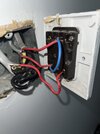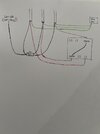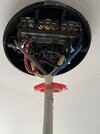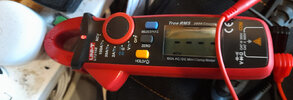I will check again tomorrow but if I remember right there is a chock block that the blacks are connected to. There is 3 cables coming in. Each cable has red, black and earth. 2 reds are connected to com, & the other to L1. The blacks are in the chock block. Cant remember exactly so Ill need to check tomorrow. Never had an issue before, only since I reconnected 2 broken earths which I assume is what made me get a shock. I connected the earths to the switch earth not the back box earth where they were previously. Surely that wouldnt matter though would it? Its quite a tight space with all the wires, could anything have popped out whilst pushing it back in? Although how could that affect the switch in the other room?What is the black wire connected to?
Last edited:





